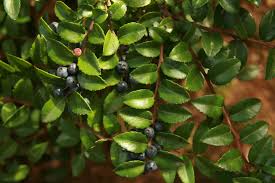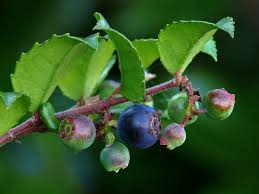Vaccinium parvifolium
“Red huckleberry” “Huck”
ERICACEAE
Deciduous shrub
Zone: 6 – 8
Native habitat: Western North America
 Conditions
Conditions
Soil: high organic content, acidic
Moisture: well drained, moist is best, tolerates drier conditions
Light: full sun (not best) to full shade – better not in afternoon sun
Exposure: general
Plant size (h x w): 3′ – 12′ x to6′
Other: usually larger in shade
 Aesthetic
Aesthetic
Shape/stem: deciduous, multi-stemmed, round, bright green shoots with an angular cross-section
Leaf: small, ovate, to an inch, entire margin
Flower:yellow-white to pinkish-white with pink, decumbent bell-shaped 4-millimetre; flowers and fruits at a young age
Bloom: spring
Other: slow growing; red, succulent berries in late summer are edible
 Treatment (how to…)
Treatment (how to…)
Plant: general, water while establishing, looks nice and grows well in decaying wood
Maintain: low maintenance, no pruning needed, thinning cuts if needed
Propagate: cutting (summer)
 Uses
Uses
Landscape: mixed boarder, native garden, , edible garden, wildlife garden, shade garden, woodland, permaculture, four season interest (winter shape)
Companion planting: nice with larger evergreen foliage plants like rhododendrons and ferns; some other ideas: Sambucus nigra, Stipa spp, Lambs ear, Heuchera spp., Astilbe spp,
Medicinal: unknown, berries edible
Other: berries make a great jam; nice in a winter arrangement or wreath; brings in robins and waxwings
Vulnerabilities
Pests and disease: none significant
Deer resistant: no
Interest
Local info,: Eastern North America native, P. capitatus is native to Western North America
Pot size (to purchase): 1 gallon
Nature: North American native deciduous shrub
Identification (key features): .id by red tips on stems, branching slightly irregular and red berries;
differs from evergreen huckleberry obvious in that it is deciduous and has very different leaves, soft, entire margin (not serrate) and a lighter green as well as red berries not black blue
Interesting facts:
Cultivars:
Comments: beautiful in grown in good conditions (morning sun then shade is best); often found growing in other dead wood, logs or stumps (when see it in the wild); first to germinate after a bad fire














![9703732 Oregon Grape blossoms & foliage [Berberis nervosa]. Bellingham, L Padden, WA. © Mark Turner](https://westcoastislandblooms.wordpress.com/wp-content/uploads/2015/11/mahns.jpg?w=198&h=300)

 infection, UTI, sore throat, acne, etc.
infection, UTI, sore throat, acne, etc.














 Uses
Uses



















